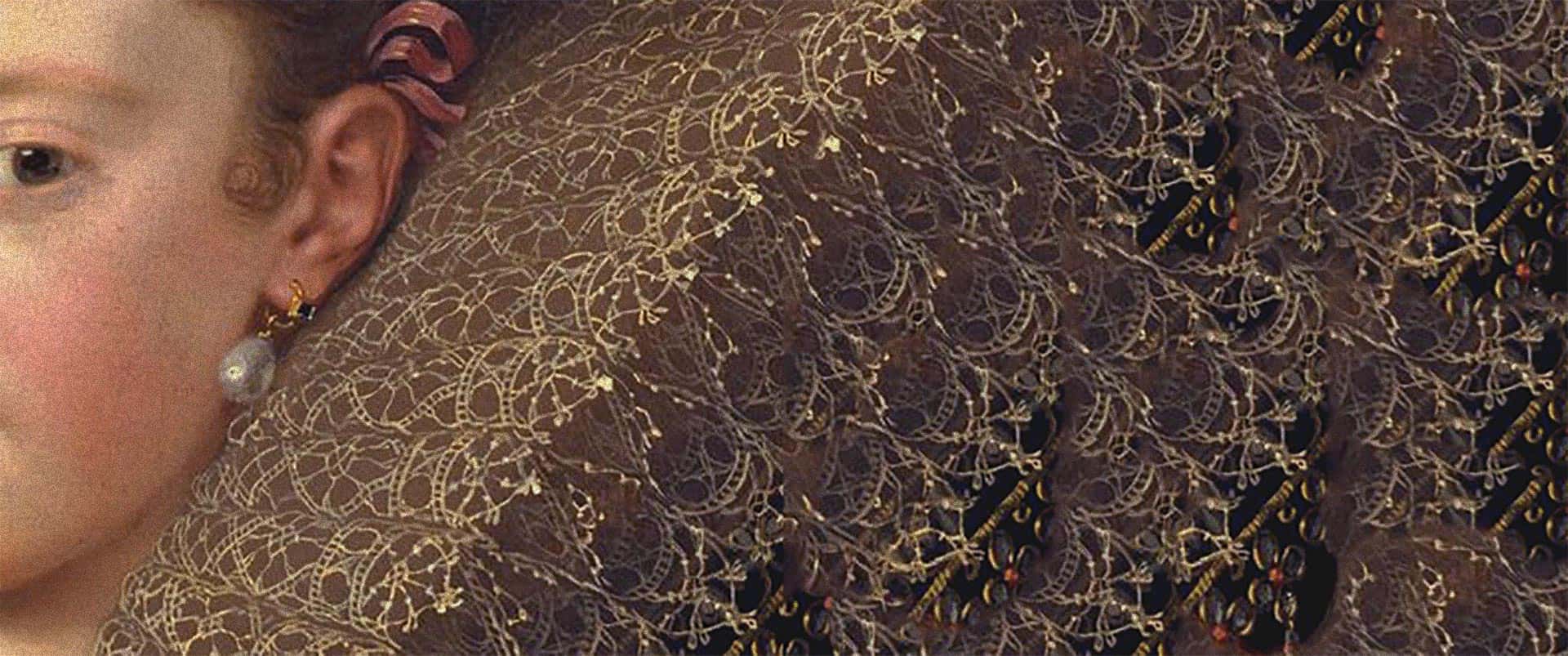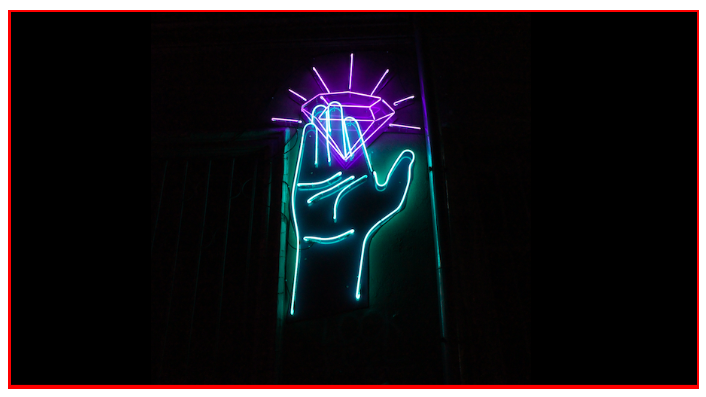Come Visit Us
- Monday 11:00–6:00
- Tuesday 11:00–7:00
- Wednesday 11:00–7:00
- Thursday 11:00–7:00
- Friday 11:00–7:00
- Saturday 10:00–4:00
- Sunday closed

Shopping online is great for many things… purchasing gifts, clothes, heck even groceries. Best of all, shopping online typically means you’re finding the best deal around. But there is one thing you might want to forego jumping online to purchase, and that is a diamond for your sweetie. Why you ask? Check out ourTop 5 Reasons you may want to think twice before adding that diamond to your online cart.
We encourage clients considering the online route do conduct a little experiment...
Of course this is easier said than done.The idea of this exercise is to simply show you how complicated it is to choose a diamond. At La Bijouterie, we love helping our customers find the exact diamond that fits any budget and any style, and one that will impress the person on the receiving end.
When it comes to customer experience, you can rest assured that your satisfaction is our utmost concern and that your happiness is our singular focus. Curious to learn more?Book an appointment today and check out our reviews onYelp.
~ LB
It would have been impossible to predict the ripple effect the Covid-19 virus and global pandemic has had on the retail economy. What the world initially thought would be the demise of brick and mortar businesses, ended up being an opportunity for them to pivot and get to the core of what their consumers were looking for.
For many consumers, it was a moment of realization-- that when it comes to buying something as personal and monumental as an engagement ring, in-person is always the best option.
According to the National Retail Federation (NRF), "US retail sales rose in September 2021 as consumer fears over the Covid-19 Delta variant redirected spending toward goods rather than services. However, it’s possible September spending could have grown even more if not for the shipping bottleneck at US ports. Overall, the September report is very promising for a strong finish for the year. In September alone, sales increased year on year in all nine of the categories the US Census Bureau monitors. The clothing and accessories segment — which includes jewelry — had the highest growth, up 23%.”
This data tells us that people are choosing to celebrate major life milestones now more than ever. If nothing else, being caught in a pandemic has forced each of us to realize the fragility of life, and why spending it and celebrating with those with love should never be taken for granted.
Even during the height of lockdown, when people were hesitant to see family, we found that our customers still opted to come in person in order to learn about the diamond buying and ring creation process. Our incredible customers still wanted to see and touch and purchase in person. They wanted to get to know our team and build a level of trust. These are the reasons why in-person diamond shopping can never be replaced by a website’s algorithms or AI bots.
Logistically speaking, a diamond should be inspected top to bottom with a magnifying glass by both the jeweler and the buyer, so you have a clear understanding of what you’re actually purchasing. An online website has no pressure to offer you a top quality diamond at a reasonable price since there is no official face to the brand. No one person's name or livelihood is on the line. A much different scenario for local retailers.
Last March, Blue Nile, one of the largest online retailers of diamonds, announced plans to grow its showroom presence from five to 55 locations within the next three years. Others are also dipping their toes back in the showroom waters, according to The International Council of Shopping Centers, as some things just don’t translate well to an online shopping experience.
As a company, we’ve always believed in the value of in-person shopping, especially as it relates to something as important and meaningful as an engagement ring. Ten years ago, when La Bijouterie was formed, we made the purposeful decision to open a brick and mortar location, not an online store, because we value the importance of helping customers in person, especially when making one the biggest and most emotionally charged decisions of their lives. It seems as though today’s consumers value the same.
Want to learn more about our thoughts on purchasing a diamond online? Check out our previous blog post, “5 Reasons to Think Twice Before Buying a Diamond Online”.
There is no denying the retail industry is alive and well. At La Bijouterie, our sole purpose is to help couples achieve a milestone moment in their lives any way we can. We believe in quality over quantity, and educating always. Before pulling the trigger on such an important decision, book a no stress 30 minute 1:1 appointment.
At Your Service,
Set F.
Founder, La Bijouterie
From groceries, to everyday supplies, there is no denying that online purchases have saved the day amid this pandemic, and rightfully so. This uptick in online purchasing has recently brought to light the question of whether buying a diamond online is a smart move, and if not, why? We’re here to answer that question and explain why you may want to think twice before adding that diamond to your online cart and book your in person appointment with a trusted retailer instead.
Did you know that diamonds with the same GIA grade can greatly differ in quality and in price? To understand how this is possible, it’s important to first remember that a GIA certificate is still an educated option. Basically these reports have a list of caveats protecting the grading authority from legal action resulting from inaccuracy.
But why the inaccuracy? Well, we’re glad you asked. The general rule applied to grade intolerance in diamond reports, ie) GIA, is one grade for both color and clarity. This means that a 1 carat diamond graded as a G SI1, may vary in color from F, (the top end of the grading scale), to an H, the bottom end.
Similarly, the SI1 clarity rating may vary from VS2 at the top end, to SI2 at the bottom. As you might imagine, this range in a G SI1 diamond can create quite the quality and pricing difference, a 56% price difference to be exact.
This example demonstrates that two different diamonds, with the same grading, can reflect two very different prices while still being graded with accepted international standards. Without the help of a professional diamond retailer, it’s almost impossible to determine accurate quality and cost.
Color and clarity tolerance can account for very different levels in price when comparing diamonds in stores or on a website. Color and clarity grading is not exact science, the grading is subjective. The only part of diamond grading that is absolutely objective is diamond weight.
Now, GIA cut grading is considering the industry standard, with the highest being a triple Excellent cut. This takes into consideration cut or proportion, polish, symmetry and fluorescence.
Likewise, there is no universal sliding scale that can calculate a diamond's diminished value due to cut and polish differences.
What about fancy cut diamonds?
Clarity and color grading are treated the same with fancy shaped diamonds such as pear and heart shaped, as they are with brilliant. The difference is the cut of a fancy shape diamond is more subjective. GIA does not assign cut grades to fancy shaped diamonds because they’re are too many variables to consider. Instead they are inspected to see how pleasing they are to the naked eye. They lose value if they are misshapen, too long, too short, too deep or too shallow. All of which will result in a lack of brilliance.
Diamonds have value in terms of cash money, and obviously a strictly graded diamond is more valuable than a poorly rated diamond. There is always a reason why one diamond is less expensive than another. More often than not, potential buyers believe the difference in price is due to retail margins, however the most common reason for price inequality is diamond inequality. Be sure you’re asking these important questions to any diamond retailer you work with.
The most important thing to consider is to buy the diamond and the dealer, not just the diamond report. Diamond reports do not assign dollar amounts, they only describe diamond characteristics. Remember, no two diamonds are alike, and strictly graded diamonds provide more value and are worth every extra penny.
At La Bijouterie, we take a personalized 1:1 in-person appointment approach. We adopted this way of conducting business over 6 years ago because it allows us to educate the potential buyer and it has proven to be most successful. Now more than ever, customers are seeing the value of dedicated and uninterrupted appointments. It’s a time to ask questions and express any concerns you may have.
Interested in setting up a Phase I appointment? You can do so here. To learn more about the “Reasons To Think Twice Before Purchasing a Diamond Online,” click here. Want to learn about the 4 C’s of Diamond purchasing, click here. As always, reach out to us with any questions you may have. We love hearing from you!
~ LB

Photo by Lili Popper on Unsplash
It’s an all too common misconception that purchasing a diamond online is cheaper than ordering one through a brick and mortar retailer. This misconception stemmed mostly from the lack of sales tax for online purchases. Did you know that as of December 1, 2018, online retailers began collecting and remitting sales tax for online orders placed by consumers, making the idea of a blind, online purchase, even less appealing.
The once financial benefit of buying a diamond online has drastically changed. Today more than ever, consumers are looking to have a local connection with a jeweler and build a level of trust before making such a large financial decision. The bond you build during an educational in-person visit is unmatched.
Take Blue Nile for example, a diamond retail company that was born online and built to disrupt the whole diamond/jewelry business. They have now been forced to open five retail stores just to stay relevant.
The idea of wanting human to human interaction isn’t something new. Today, consumers want to be educated and feel like they’re not getting taken advantage of, regardless of the industry.
When purchasing an engagement ring, they want to physically see the diamond they are purchasing and play an instrumental role in the process of designing it for their significant other.
The truth is, when it comes to diamond shopping, there’s a lot more to consider than just the listed price on the website.
For one, you want to ensure you’re being offered a quality guarantee. This means if something is in fact wrong with the diamond you purchased, (say an imperfection you weren’t expecting, or the color is off), you want to know that this can all be taken care of for you. With an online purchase, this type of quality guarantee just doesn’t exist. Buying a diamond with no guarantee could result in you overpaying for a diamond you thought was a great deal.
A second thing to consider is the Customer Experience. Buying a diamond online means making one of the biggest financial purchases of your life completely blind. As you might imagine, it takes years to understand and learn how to evaluate a diamond, which is why buying online can be so tricky and unforgiving. Sure you can try to pawn-off a faulty diamond, but you will end up losing hundreds, if not thousands in the process. Do yourself a favor and go with a jeweler that prides themselves on the customer service they offer, and has many repeat customers.
Purchasing a diamond online means you’re not able to work with an experienced jeweler to come up with a diamond ring, (setting and all), that fits within your budget. It’s a common misconception that a shopping online will get you a better deal. An experienced jeweler can help you prioritize what is most important to you and your significant other, (say diamond size perhaps), and find you the best options given your criteria and budget.
At La Bijouterie, our goal is to find a diamond that makes sense for you by sharing our years of knowledge to help you make the best decision. The in-person shopping experience is here to stay, we are for it. As a matter of fact, we’re huge purveyors of it.
Curious to learn more about what we offer? Book an appointment today and check out our reviews on Yelp. We’re here to help!
-LB

History has a funny way of repeating itself, and the man-made diamond industry is no exception. If you’re familiar with the simple rules of supply and demand, then you understand that as supply goes up, demand goes down. Applying this same rule to man-made diamonds, you can quickly understand why it will be hard for them to maintain their long term value.
From the Experts
But don’t just take our word for it, on Dec. 21, 2018, a Reutersreport quoted analyst Paul Zimnisky as saying lab diamond prices had softened considerably. Another report fromBain & Co. stated the “Production of lab-grown diamonds has risen dramatically and will continue to do so, though their prices will likely continue to fall.”
This report mentions that “It costs $300–$500 per ct. to produce a CVD lab-grown diamond, compared with $4,000 per ct. in 2008, and calculates that the retail price of gem-quality lab-grown diamonds has fallen by about half in the past two years, while wholesale prices have fallen threefold. It forecasts that trend will continue as efficiencies increase, new competitors enter the market, and the product gets “commoditized.”
As the manufacturing technology for these lab-made diamonds improves, the stones’ prices will decrease. One jeweler remembers when cubic zirconia was $800 per ct. Created gems are, like created diamonds, chemically the same as their mined counterparts. But their values are very different. Unlike the earth, which has a limited supply of diamonds, factories can mass-produce these stones, and that will drive prices down in the long run. (JCK)
Held to the Same Standards
If these man-man diamond resellers are selling their goods as diamonds, or, put another way, if man-made diamonds we’re true diamonds, then they should: (JCK)
But What About the Environment?
There is a common misconception that lab made diamonds are more eco-friendly. You see in order for a lab made diamonds to be created, it actually involves more chemicals and electricity consumption and is worse for the environment than those that are naturally occurring. Not to mention unregulated laborers. This topic rarely touches on the other side- the communities in Africa that heavily rely on the diamond business for their wellbeing - it is often their family business. “Tens of millions of people rely on the diamond industry for income, among them the poorest people on earth trying to make an honest living. There are an estimated 1.5 million artisanal miners digging for diamonds in Africa, and they support another 7 million people with their earnings. Advocating synthetics as an ethical substitute for natural diamonds threatens the livelihood of those diggers.” (Rapaport)
Ethically Sourced Only
At La Bijouterie, we never work with conflict diamonds. We strictly work with ethically sourced GIA certified diamonds, and you will receive a GIA certificate and appraisal with your jewel. We’ve worked in the diamond wholesale business for generations and only work with trusted and ethical sources.
If you are against buying diamonds, or perhaps a diamond is simply not in your repertoire of jewelry taste, then you may enjoy looking at a sapphire, emerald, ruby, or other colored diamond gems. We are happy to walk you through our selection of precious stones to help you find the one that speaks to you.
Closing Thoughts
At La Bijouterie, it has always been our primary goal to help customers start their journey to marriage with a wise diamond purchase- creating a tangible symbol of their love, and a ring that makes sense financially. After generations in the diamond business, one thing is certain. If we cared more about our profit margins than our customers and our integrity, we would sell man-made diamonds, as the sell price to actual cost ratio is much greater than the profit made on the sale of a diamond. But this is not what our company values or what we’ve based our business model on, especially since we know a man-made diamond does not hold its value. As your personal jeweler, this is not a financial decision we would advise upon. Let it be known that we are not against man-made diamonds, but instead, are against their value, (or lack thereof). Read more about this topic.
Only a natural diamond has the rarity that supports its economic and emotional value. Consumers use diamonds as a symbol of love for that very reason. We all want to feel special, unique and rare, especially in our relationships, and a diamond communicates that message. (Rapaport)
~ LB

Thank you for visiting La Bijouterie...
Don't forget to read our latest Blog entry
or this interesting blog post!